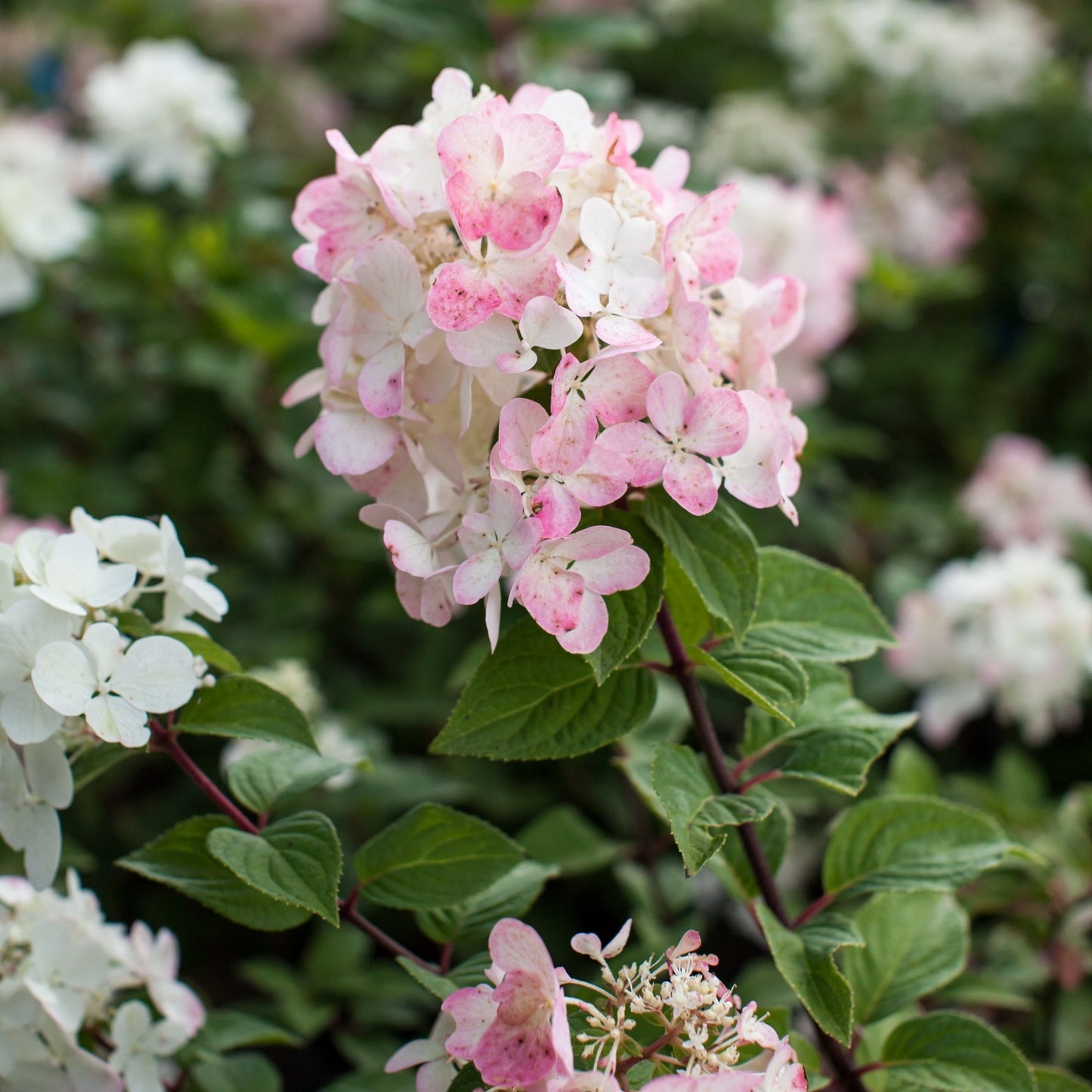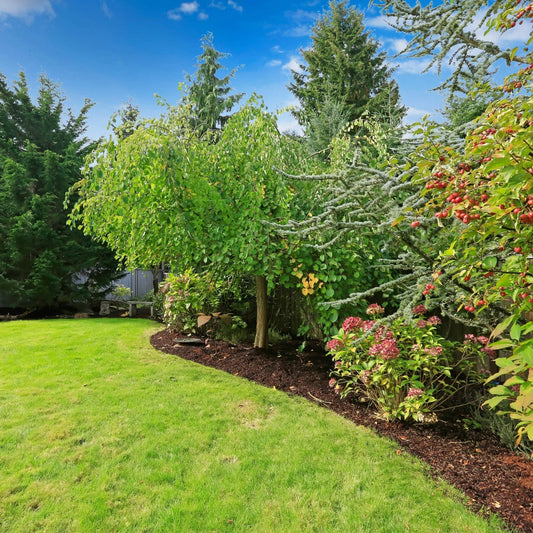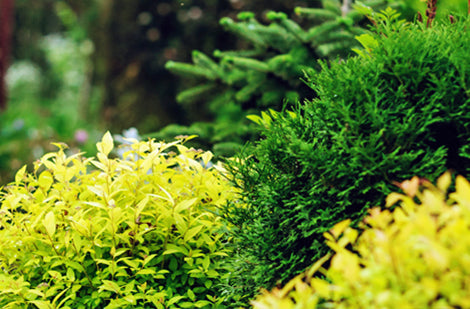Hydrangea paniculata Diamond Rouge®
Hydrangea paniculata Diamond Rouge® - Diamond Rouge® Panicle Hydrangea
Hydrangea paniculata Diamond Rouge® - Diamond Rouge® Panicle Hydrangea
Exposure
- Sun
- Part-sun
- Part-shade
Rusticity
Bloom time
- July
- August
- September
- October
- Evolving flower colours
- Long-lasting blooms
- Cut flowers
- Attracts pollinators and butterflies
- Very cold hardy (Zone 3)
Illuminate your garden with Hydrangea paniculata Diamond Rouge®, a spectacular variety that offers a festival of colours throughout the season! Its abundant flower heads transition from pure white to soft pink, then to an intense raspberry red, finally settling into a rich wine red. This compact, easy-care shrub is a true focal point, promising a dazzling display from July through autumn.
Characteristics
- Foliage: Dark green leaves, providing a beautiful backdrop for the flowers. In fall, the foliage transforms into a magnificent dark orange, adding seasonal interest. The foliage is deciduous (falls in winter).
- Flowering: Produces abundant, long-lasting, rounded flower heads that start white, progress to pink, then intense raspberry red, and finally a deep wine red. Blooming begins in July and takes on red coloration earlier in the season than other pink panicle hydrangeas.
- Light Requirements: Tolerates full sun to part shade. Full sun exposure generally promotes better flower colouration.
- Habit: Compact and upright habit, forming a well-structured shrub.
- Growth: Moderate growth rate. Reaches a mature height of approximately 120 to 150 cm (4 to 5 feet) and a spread of 90 to 120 cm (3 to 4 feet).
- Humidity: Requires medium watering. Once established, it is drought tolerant.
- Soil: Adapts well to most garden soils, provided they are well-drained.
- Temperature: Very cold hardy. Tolerates winter cold well. Its fall colour is best when night temperatures are 10 degrees cooler than day temperatures.
- Watering: Medium watering. Although it tolerates drought once established, regular watering is beneficial, especially during intense heat periods.
- Resistances: Drought tolerant. Generally resistant to diseases and pests.
Usage
- Types of Use: Ideal as a focal point in garden beds, as a small hedge, or in containers for patios. Its flowers are excellent for fresh or dried cut flower arrangements.
- Decorative Benefits: The spectacular colour evolution of its flowers, from white to deep wine red, offers prolonged visual interest from mid-summer through autumn. The fall foliage colour beautifully complements the display.
Maintenance
- Fertilization: Fertilize in spring with a balanced NPK fertilizer to promote healthy growth and generous flowering.
- Pruning: Prune in early spring, before new growth appears, to maintain shape, control size, and encourage abundant flowering. It blooms on new wood.
- Planting:
- Spacing: Approximately 90 to 120 cm (3 to 4 feet) apart to allow for good development and air circulation.
- Depth: Plant at the same depth as it was in its container.
- Period: Spring or early fall are the best times for planting.
Plant details
Dimensions
Dimensions
Characteristics
Characteristics
Habit:
- Bushy
- Compact
- Upright
Flowering colours:
- White
- Pink
- Red
Plant needs
Plant needs
Watering:
- Tolerates dry, well-drained soil
- Tolerates moist soil
Maintenance:
- Easy
- Fertilize regularly
- Prune in spring
Soil requirement:
- Well-drained soil
- Rich
Features
Features
Resistance:
- Cold
- Heat
- Dryness
Attract:
- Butterflies
- Pollinators
Use:
- Clumps
- Borders
- Flowerbeds
- Cut Flowers
- Isolated
Attribute:
- Long blooming
- Cut flowers
- Self-fertile
- Non-toxic to cats
- Non-toxic to dogs











Related articles
-

Trees and shrubs for small space landscaping
Read the articleHaving an exceptional garden is possible, even in the city! Discover our selection of trees and shrubs perfect for small lots, and transform your outdoor space into a green oasis.
-

When and how to plant shrubs: successful planti...
Read the articleDiscover our complete guide to mastering shrub planting and care. Learn the best planting times, essential techniques, along with tips for watering, fertilizing, and managing common issues. Our practical advice...
-

Choosing shrubs to plant
Read the articleIn exterior design, shrubs represent furniture. They set the scene and set the tone for the flower bed. Shrubs constitute the living architectural elements of the landscaped garden. As proof,...
-

Shrubs: beautiful all year long
Read the articleLe grand choix d’espèces fournit l’occasion de varier les formes, les feuillages, et de créer des floraisons successives, bref, de composer un jardin magnifique à longueur d’année. Pour toutes ces...



















